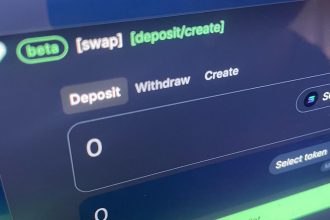Tokenized Assets Poised for Growth, Despite Market Dips
At the recent TokenizeThis conference in New York, discussions centered on the future of tokenized assets, highlighting ongoing growth in the stablecoin market while venturing into potentially volatile yet promising territory.
Growing Market, Q1: “Best Worst Quarter”
Despite a downturn in asset prices observed throughout Q1 this year, the sector demonstrated robust underlying resilience. According to Bitwise, the quarter marked “the best worst quarter in crypto’s history,” characterized by exceptionally high stablecoin demand and healthy growth in tokenized real-world assets (RWAs).
The stablecoin market approached $230 billion, while overall on-chain RWA assets, according to RWA.xyz, reached $18.5 billion. Tokenized RWA market value surged by 37% quarter-over-quarter, even as crypto asset benchmarks retreated.
Private Credit Dominates, Treasury Debt Also Significant
Analysis from Bitwise underscores that the significant activity, particularly in the private credit segment, represents the dominant market force. Another substantial piece stems from tokenized US Treasury debt. This category notably includes BlackRock’s tokenized money market fund, BUIDL, which recently surpassed the $2 billion Assets Under Management (AUM) threshold.
Source: Bitwise
Regulatory Clarity Key for Future Expansion
Looking ahead, regulatory progress is seen by many as critical infrastructure. Neoclassic Capital managing partner Mike Bucella emphasized the upcoming expected legislation, describing it as pivotal for allowing “on-ramps and off-ramps to proliferate.” He views stablecoins and tokenized Treasury products as foundational elements upon which more complex on-chain innovations will be built.
“The ‘boring stuff’ is an absolute necessity, because it exists in the offchain world. If you can’t do that in the onchain world, then you’re not going to sit there and wait for some interesting onchain yield product; you’re going to go offchain into the traditional markets.”
Public Stocks, Private Opportunities Next Hurdle
Determining the next phase of adoption presents challenges. Dinari’s Chief Business Officer Anna Wroblewska posits that publicly listed US stocks offer a viable, next entry point due to their familiar appeal. Conversely, Galaxy Digital’s tokenization head Thomas Cowan points out that stock investing already offers seamless user experiences through established platforms. He suggests the next growth wave may lie in addressing “clear lack of transparency [and] settlement risk”—highlighting private credit.
Further support for private credit entered the conversation when Anton Kozlov, 21Shares US sales head, stated clear demand exists for tokenized private equity, mentioning companies like SpaceX and OpenAI. Blockworks Research analyst Carlos Gonzalez Campo estimates these types of shares could see widespread tokenization within the next four years.
Unlocking Trillions with Tokenization
The potential market impact appears vast. Crypto custody firm Taurus estimates the broader “market opportunity” for fund tokenization sits at a staggering $1 trillion by 2030.
Source: Taurus
Mainstream Barrier: User Experience
“Currently, if an investor needs to sell their stake in a private equity fund with a lock-up period of several years, their bank or asset manager must find a matching buyer through a manual process that can take weeks and relies primarily on emails and paper-based transactions.”
While the foundation built by stablecoins and yield funds seems solid, it remains unclear which alternative asset classes will trigger significant adoption. Nevertheless, offering investors familiar user experiences remains a common theme for facilitating further expansion.
Anton Kozlov argued, “[Investors] want everything in a single window — kind of like a Robinhood experience — where you can access crypto, you can access stocks, down the road you can access tokenized private credit,” concluding, “That’s the dream.”












